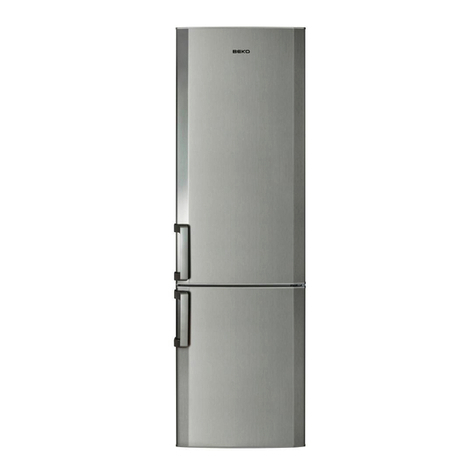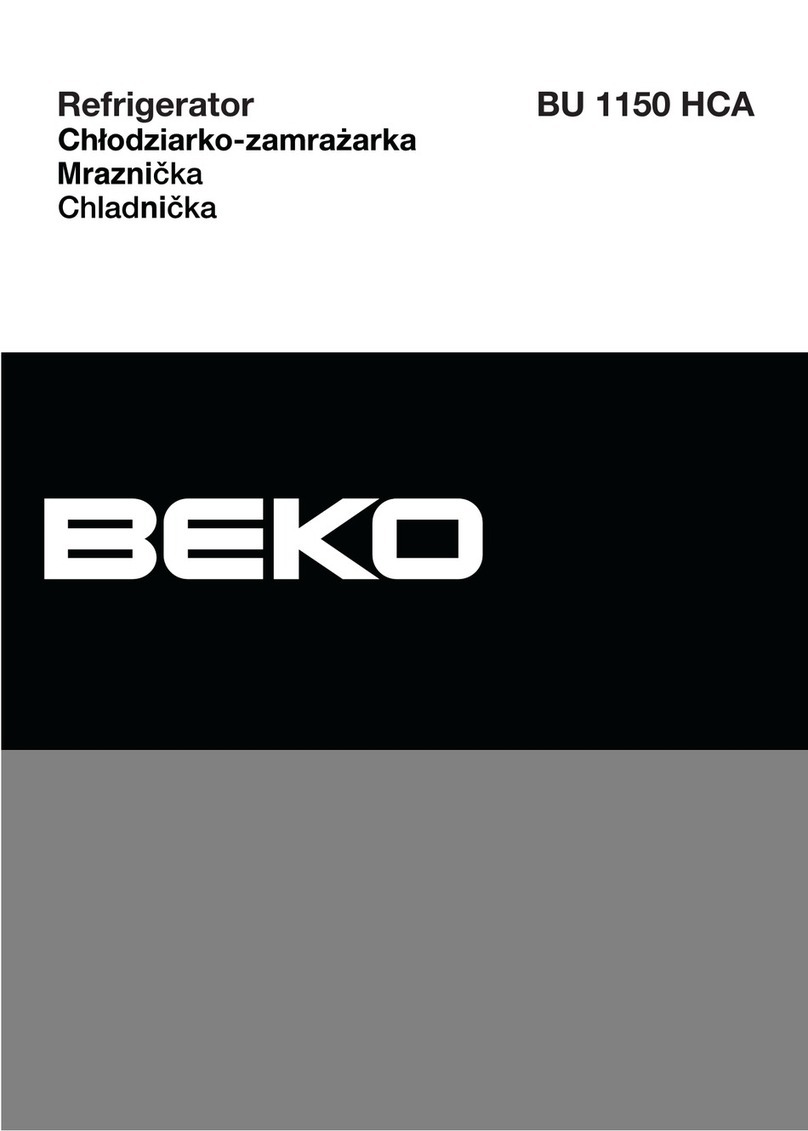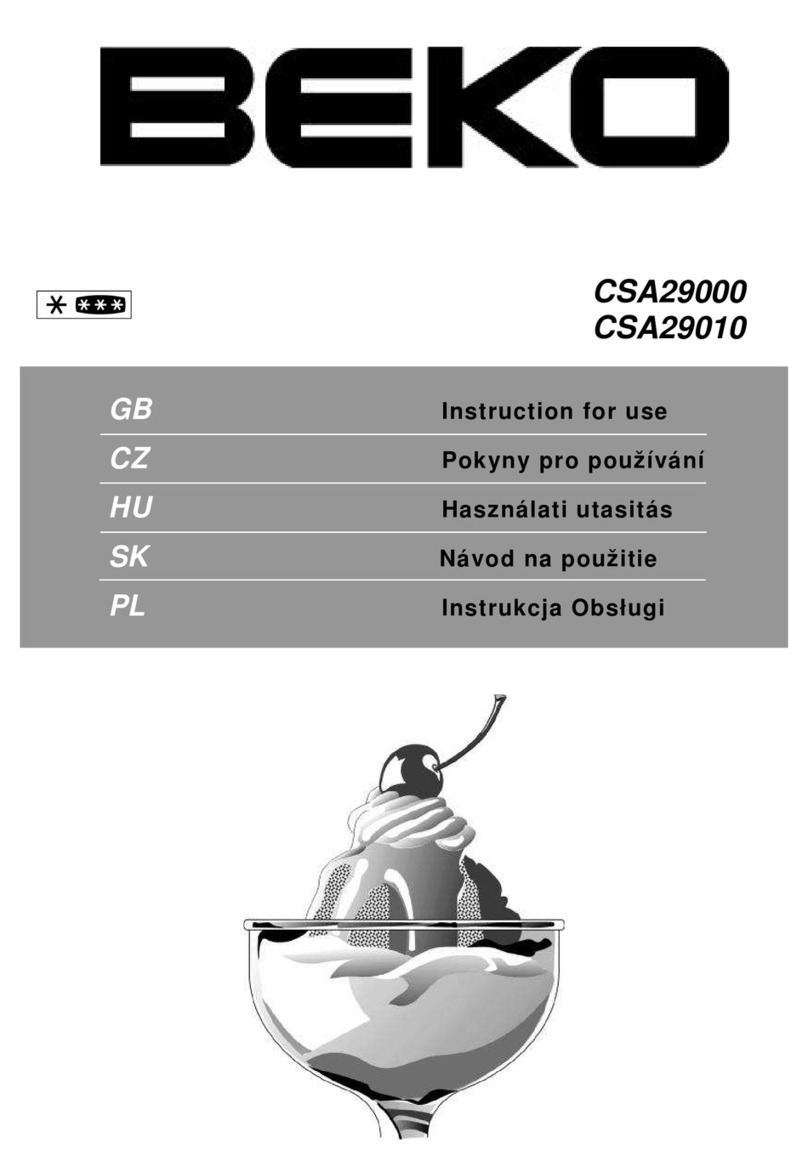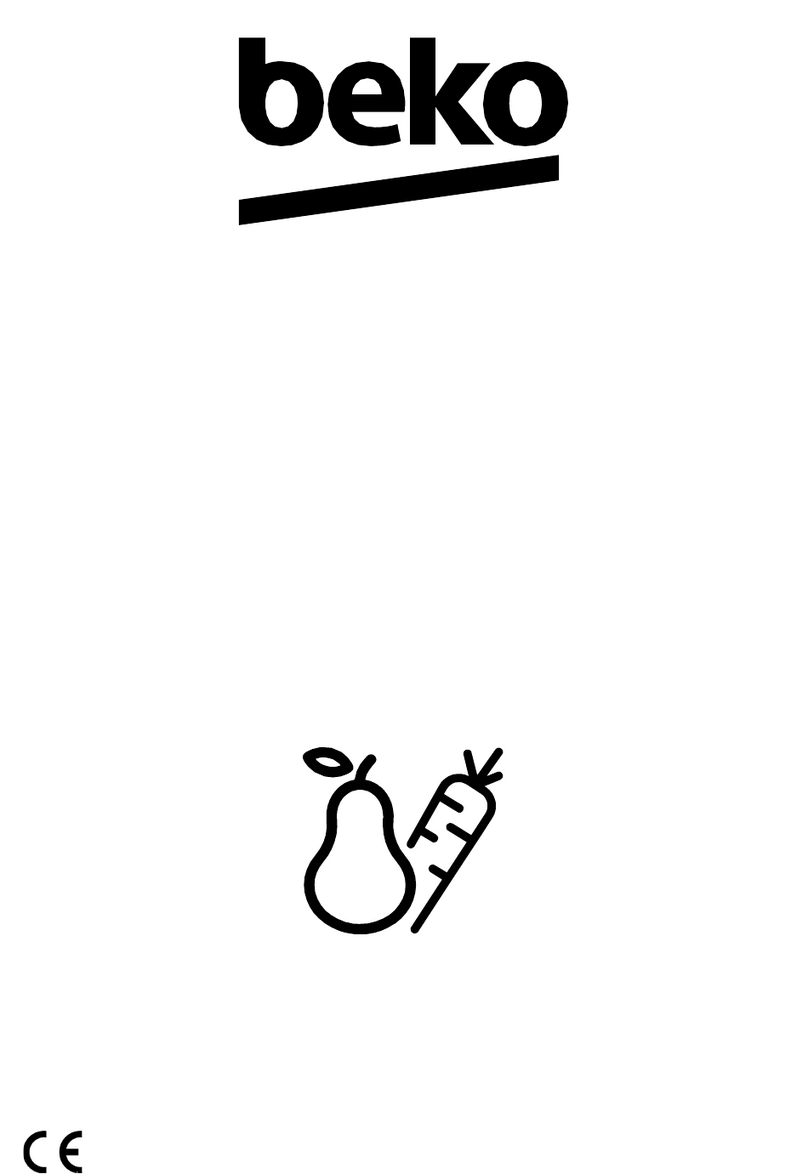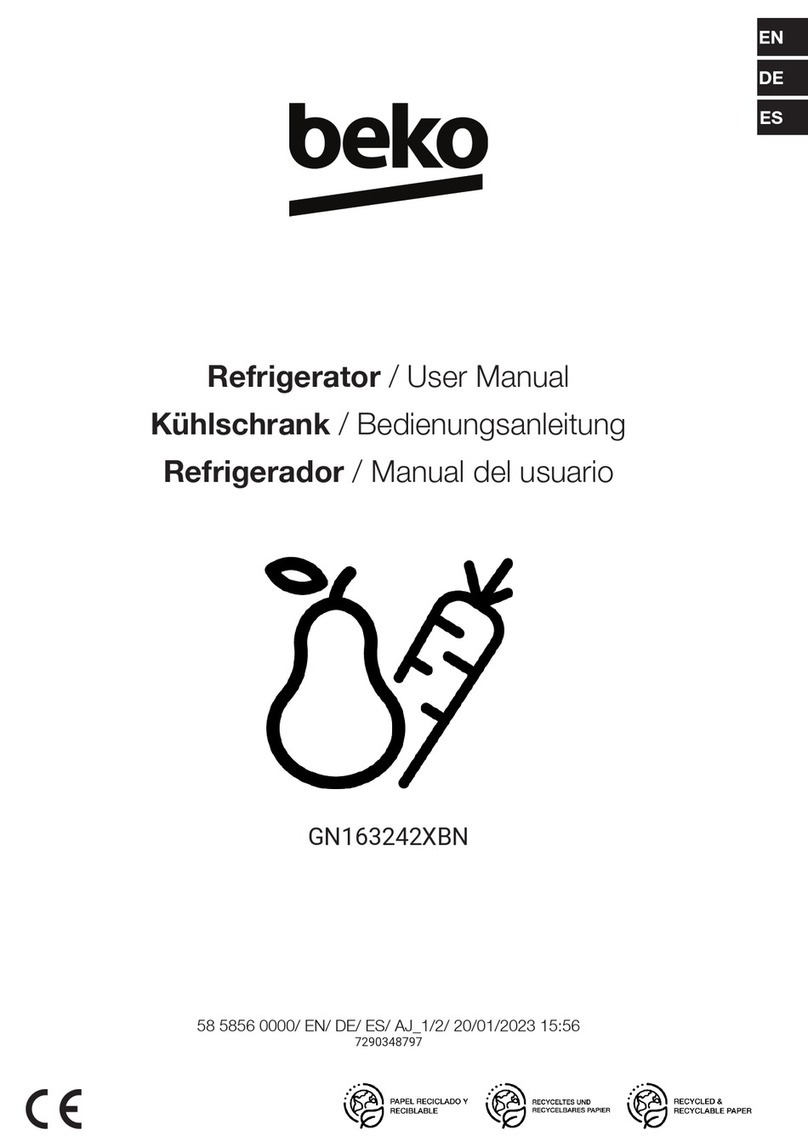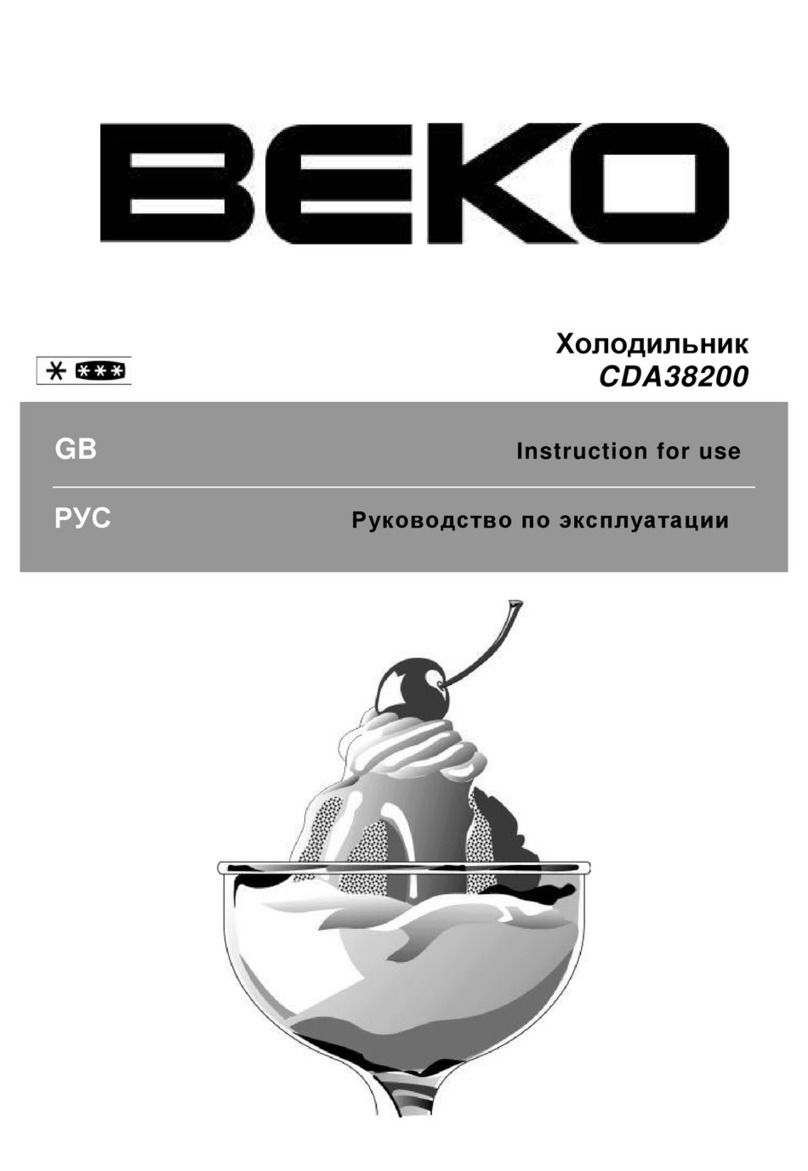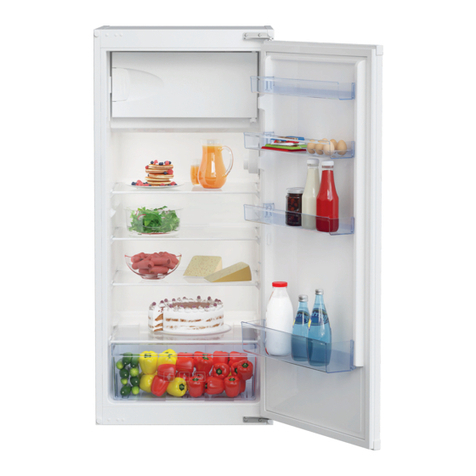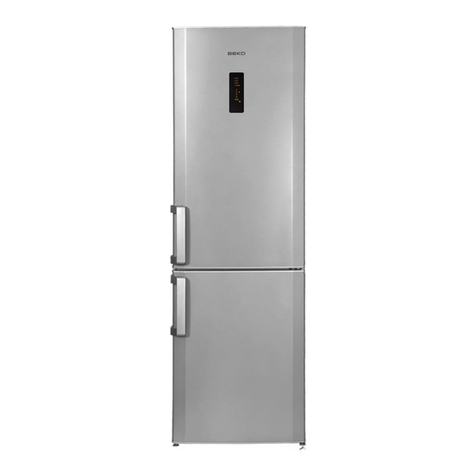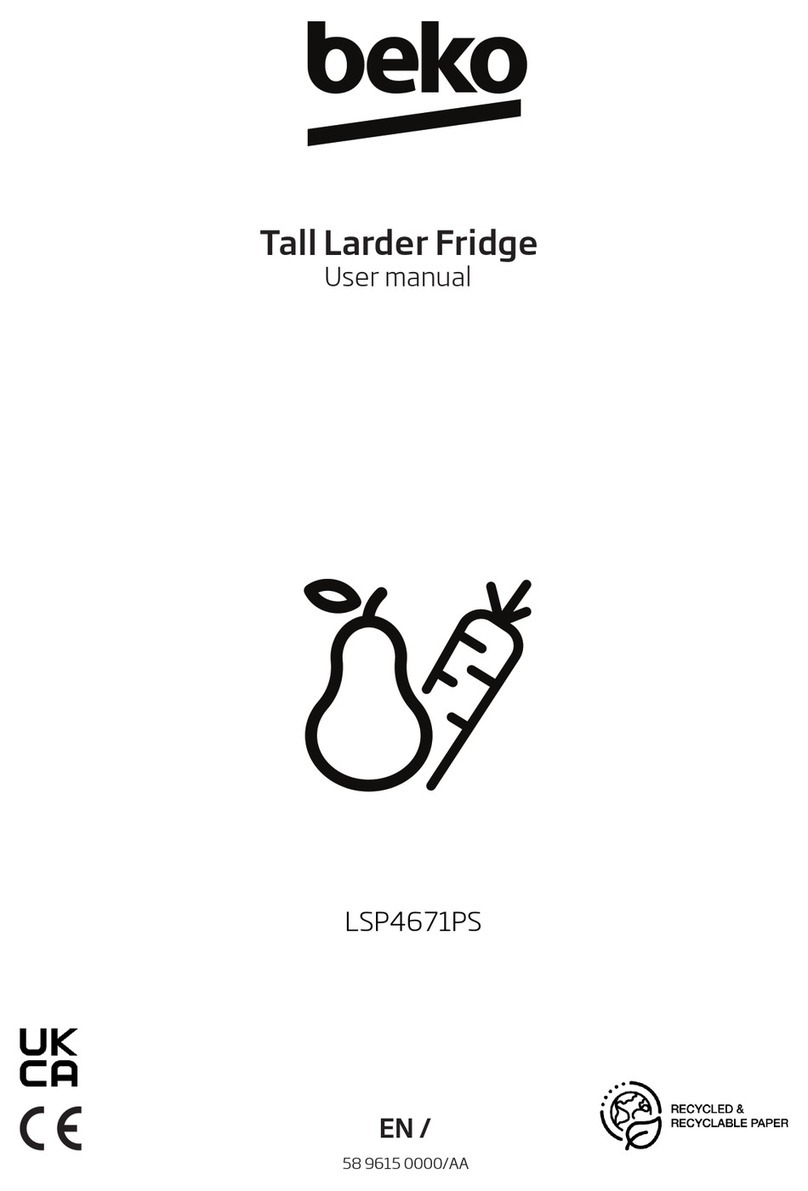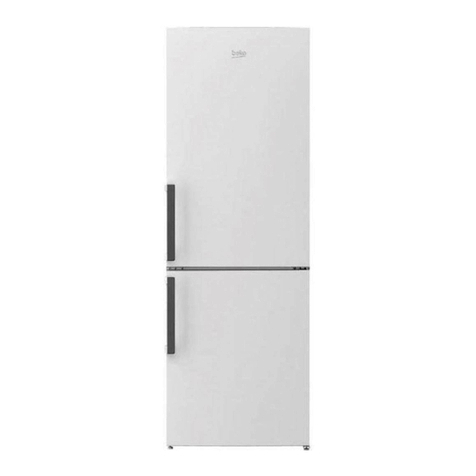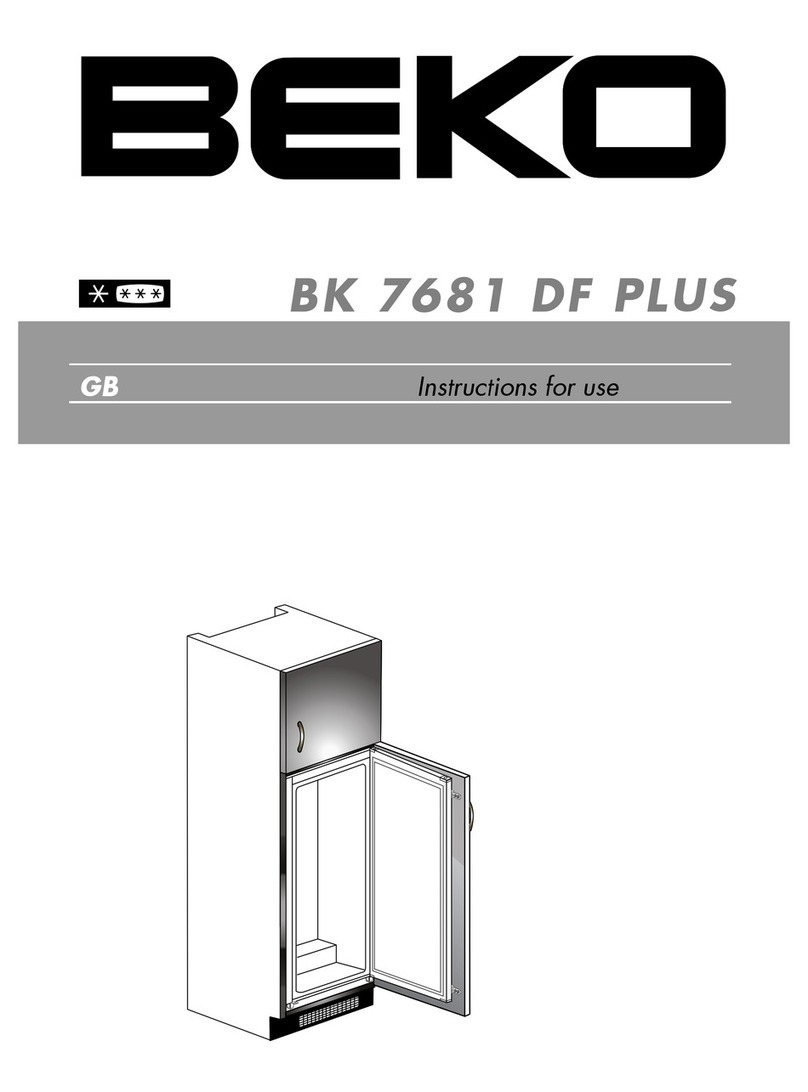EN
6
• Do not overload your refrigerator
with excessive amounts of food. If
overloaded, the food items may fall
down and hurt you and damage
refrigerator when you open the door.
Never place objects on top of the
refrigerator; otherwise, these objects
may fall down when you open or
close the refrigerator's door.
• As they require a precise
temperature, vaccines, heat-sensitive
medicine and scientific materials
and etc. should not be kept in the
refrigerator.
• If not to be used for a long time,
refrigerator should be unplugged. A
possible problem in power cable may
cause fire.
• The plug's tip should be regularly
cleaned; otherwise, it may cause fire.
• The plug’s tip should be cleaned
regularly with a dry cloth; otherwise, it
may cause fire.
• Refrigerator may move if adjustable
legs are not properly secured on the
floor. Properly securing adjustable
legs on the floor can prevent the
refrigerator to move.
• When carrying the refrigerator, do not
hold it from door handle. Otherwise, it
may be snapped.
• When you have to place your product
next to another refrigerator or freezer,
the distance between devices should
be at least 8cm. Otherwise, adjacent
side walls may be humidified.
For products with a water
dispenser;
Pressure of water mains should be
minimum 1 bar. Pressure of water
mains should be maximum 8 bars.
• Use only potable water.
Child safety
• If the door has a lock, the key should
be kept away from reach of children.
• Children must be supervised to
prevent them from tampering with the
product.
Compliance with WEEE
Directive and Disposing of
the Waste Product:
This product complies with EU WEEE
Directive (2012/19/EU). This
product bears a
classification symbol for
waste electrical and
electronic equipment
(WEEE).This product has
been manufactured with
high quality parts and materials which
can be reused and are suitable for
recycling. Do not dispose of the waste
product with normal domestic and
other wastes at the end of its service
life. Take it to the collection center for
the recycling of electrical and electronic
equipment. Please consult your local
authorities to learn about these
collection centers.
Compliance with RoHS
Directive:
The product you have purchased
complies with EU RoHS Directive
(2011/65/EU). It does not contain
harmful and prohibited materials
specified in the Directive.
Package information
Packaging materials of the product
are manufactured from recyclable
materials in accordance with our
National Environment Regulations. Do
not dispose of the packaging materials
together with the domestic or other
wastes. Take them to the packaging
material collection points designated by
the local authorities.
